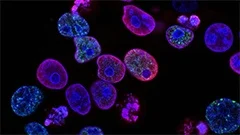Introduction
This comprehensive course aims to delve into the intricate and vital process of spermatogenesis, a fundamental aspect of sexual reproduction in male organisms. The course is categorized under Embryology or Developmental Biology.
Overview
Spermatogenesis is a complex, multistep process that generates sperm cells (spermatids) from primordial germ cells within the seminiferous tubules of the testes. This process is crucial for the continuation of a species as it ensures the production of haploid gametes necessary for fertilization.
Mechanisms of Spermatogenesis
Stages of Spermatogenesis
Spermatogonia Division and Proliferation
- Type A spermatogonia: These are self-renewing stem cells responsible for maintaining the spermatogonial population in the seminiferous tubules.
- Type B spermatogonia: These undergo mitosis to produce secondary spermatogonia, which will differentiate into either Type A or type B spermatogonia or enter meiosis.
Meiotic Prophase I
- Leptotene and Zygotene stages: Chromosomes condense and synapse with their homologous partner, forming a tetrad (synaptonemal complex).
- Pachytene stage: Crossing over (recombination) occurs between homologous chromatids to create genetic diversity in the offspring.
- Diplotene and Diakinesis stages: Chromosomes desynapse, and the synaptonemal complex disintegrates. The nuclear membrane reforms around the tetrad.
Meiosis II
- Metaphase I: The four chromatids align at the equator of the cell.
- Anaphase I: Homologous chromosomes separate, moving towards opposite poles of the cell.
- Telophase I and Cytokinesis: The nuclear membrane reforms around each chromatid, forming two spermatids (each containing one chromatid). Cytokinesis divides the cytoplasm, resulting in four haploid spermatids.
Spermiogenesis
- Chromatin condensation: The DNA of the spermatid condenses into a highly compact form called the nuclear envelope.
- Golgi apparatus and mitochondria rearrangement: These organelles move to the head of the spermatid, preparing for their roles in fertilization.
- Elongation: The spermatid elongates, forming a long, thin spermataid (spermatid).
- Cytokinesis: The cell membrane constricts at the midpiece and pinches off, resulting in four haploid sperms (each containing a single chromatid) from one spermatid.
Regulation of Spermatogenesis
The process of spermatogenesis is tightly regulated by various factors, including:
- Gonadotropins: Follicle-stimulating hormone (FSH) and luteinizing hormone (LH), produced by the pituitary gland, stimulate spermatogenesis and testosterone production in the testes.
- Intratesticular factors: Testosterone, retinoic acid, and growth factors such as Insulin-like factor 3 (INSL3) and Kit ligand (KitL), produced within the testes, regulate spermatogenesis at different stages.
- Paracrine signaling: Communication between cells via secreted proteins (such as transforming growth factor-beta (TGF-β)) helps maintain the delicate balance of cell populations during spermatogenesis.
- Environmental factors: Factors such as temperature, radiation, and chemical exposure can affect the process of spermatogenesis, potentially leading to infertility or abnormalities in sperm production.
Clinical Implications
Understanding the intricacies of spermatogenesis is essential for developing targeted therapies for male infertility, as well as for addressing the environmental factors that may affect this process negatively. Furthermore, studying spermatogenesis provides insights into the broader field of cellular differentiation and developmental biology.
MCQ: Test your knowledge!
Do you think you know everything about this course? Don't fall into the traps, train with MCQs! eBiologie has hundreds of questions to help you master this subject.
These courses might interest you
Create a free account to receive courses, MCQs, and advice to succeed in your studies!
eBiologie offers several eBooks containing MCQ series (5 booklets available free for each subscriber).




